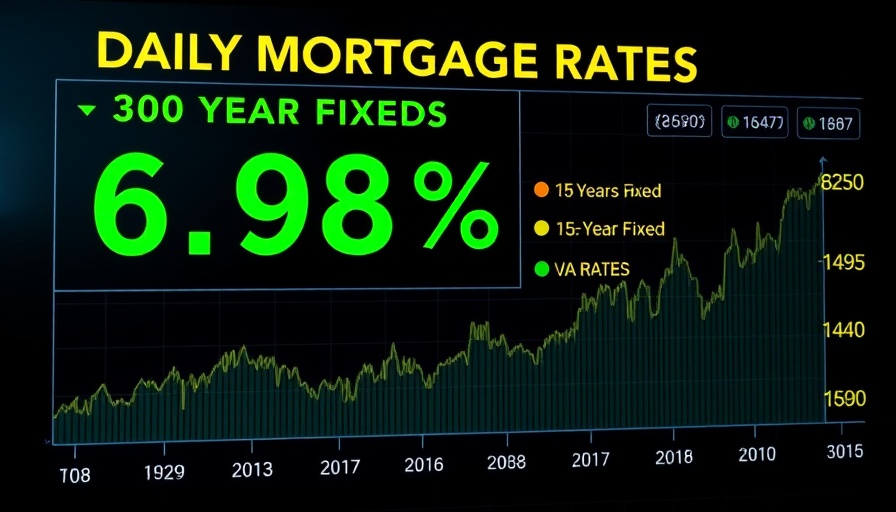
Understanding the Recent Drop in Mortgage Rates
Last week heralded a significant shift in the mortgage market, as average top-tier 30-year fixed mortgage rates briefly surpassed the 7% threshold for the first time since mid-February. However, as recent reports have indicated, the week opened with a more favorable sentiment as rates fell back below this psychological barrier, currently sitting at approximately 6.98%. This decline offers a glimmer of hope for potential homebuyers and those considering refinancing their current loans.
The Market’s Reaction to Economic Indicators
The bond market, which significantly influences mortgage rates, demonstrated an immediate response to recent economic developments. Notably, updates on tariff exclusions related to technology products played a crucial role in bolstering investor confidence, allowing bond prices to recover. Such movements indicate that even small shifts in fiscal policy can have profound effects on mortgage rates. As fiscal details continue to unfold in the coming weeks, stakeholders should be prepared for potential fluctuations as markets recalibrate.
Fiscal Policies and Their Potential Impact on Mortgage Rates
As fiscal policies are set to evolve, the implication for housing markets cannot be understated. The correlation between tariffs, interest rates, and mortgage rates suggests a delicate balance that both consumers and investors must navigate. Looking ahead, careful observation of government discussions regarding tariffs will remain essential for predictively managing mortgage decisions. Homebuyers and real estate investors should consider engaging their lenders frequently to assess how these economic dynamics may affect their financial commitments.
What Does This Mean for Homebuyers?
For individuals looking to purchase homes or refinance existing mortgages, the current dip below 7% presents a strategic opportunity. Lowering mortgage costs can enhance affordability and potentially allow for greater borrowing capacity. Moreover, as interest rates fluctuate, buyers should be informed of their options and be ready to move swiftly when favorable rates emerge. A pre-approval can be particularly advantageous in a competitive market—enabling buyers to act decisively.
The Broader Implications for the Housing Market
The mortgage landscape is intricately linked to the broader housing market. Economists suggest that sustained lower rates could foster a more robust consumer sentiment, possibly invigorating demand for housing. Furthermore, as competition among lenders intensifies, borrowers might find themselves in a better negotiating position as banks adjust their offerings in response to changing market conditions.
Key Observations and Future Trends
In examining the past week’s trends, it appears that we are at a pivotal moment. Market analysts argue that the interplay between mortgage rates and the macroeconomic environment will remain crucial in the forthcoming months. With inflation concerns still looming, monitoring Federal Reserve signals and macroeconomic indicators will empower consumers to make informed financial decisions.
In conclusion, the recent decline in mortgage rates below 7% is significant both for current homeowners and future buyers. As fiscal policies and market conditions continue to evolve, staying abreast of these developments will be essential in navigating the mortgage landscape effectively. It is advisable for potential buyers to consult with mortgage professionals to forge strategies tailored to their needs amidst this fluctuating environment.
 Add Row
Add Row  Add
Add 




 Add Row
Add Row  Add
Add 








Write A Comment